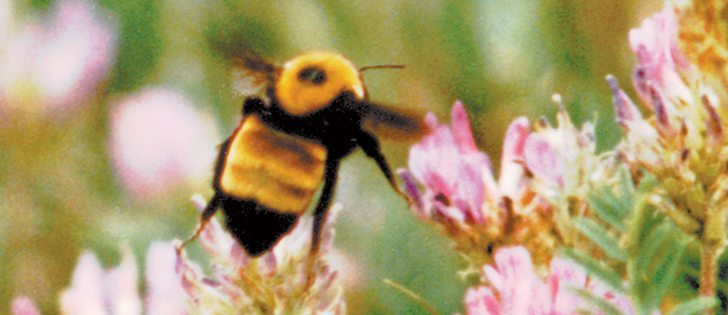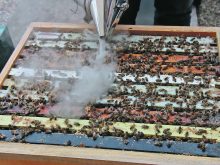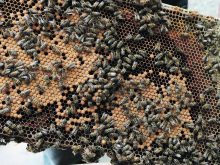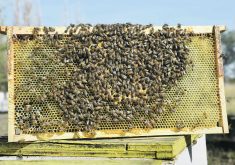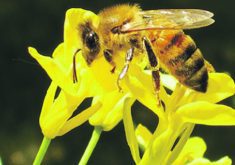Mainstream television networks and news magazines don’t normally report on innovations in pest management.
However, MacLean’s, Global News and other media outlets have reported on a Canadian company with a unique method for defeating crop pests.
BVT, a Mississauga firm specializing in bee vectoring technology, has developed a system that uses bumblebees to deliver microbial agents to crops.
The company uses a naturally occurring fungus, branded BVT-CR7, which can protect crops such as strawberries, tomatoes, apples, canola and sunflowers from fungal pathogens such as sclerotinia and botryis.
Read Also

Research looks to control flea beetles with RNAi
A Vancouver agri-tech company wants to give canola growers another weapon in the never-ending battle against flea beetles.
A bumblebee that is leaving the hive passes through a plastic tray containing BVT-CR7 in a powder form. The material sticks to the bumblebee’s legs, and the pollinator delivers the beneficial fungus to the flowering crop.
“When deposited on plants, BVT-CR 7 acts as bio stimulant,” BVT notes on its website.
“Natural processes within the plant are activated to ward off invading pathogens. This mode of action results in a plant that is stronger and produces higher yields…. BVT-CR7 does not kill anything but out-competes spatially the disease.”
BVT uses bumblebees because they are a more proficient than honeybees when it comes to delivering a microbial agent.
“Bumblebees will visit up to 10 flowers per minute,” the BVT website says.
“Bumblebees fly in relatively lower temperatures than honeybees (and) carry 10 times as much pollen or inoculant.”
Media reports about BVT have described it as a bio-pesticide, although “organic pathogen control agent” is more accurate.
“This is a biological control,” said Michael Collinson, chief executive officer of BVT, a publicly traded company listed on the TSX Venture exchange.
“Certainly not a fungicide, as that means killing fungi and we (the product) are one.”
A company spokesperson said BVT has field tested the technology, and a commercial release is underway.
BVT opened a commercial lab and production plant in Mississauga in October to develop microbial agents that are “deliverable” with bees.
For now, it is targeting growers of strawberries, apples, tomatoes and almonds.
Collinson said the bee vectoring system increases yield by 10 to 45 percent, depending on the crop.
The cost is not cheap because BVT provides the microbial agent and the bumblebee hives. A BVT document estimated the cost for sunflowers at $70 an acre.
BVT said the system provides multiple benefits: saves cost and time of applying pesticides, results in better uptake of nutrients and is environmentally sustainable.
Greenhouse tests and field trials have found bee vectoring to be just as effective as chemical spraying, said Les Shipp, an integrated pest management specialist with Agriculture Canada in Harrow, Ont.
However, it has limitations.
“Weather can have a major impact outdoors (i.e. too hot or wet),” he told International Innovation, a science and technology website.
“The bees may not fly; the inoculums can become caked and not remain powdery. Bee vectoring is not a silver bullet and, as such, should be used as part of a more holistic pest management program.”
Shipp said delivering a microbial to control fungal pathogens is just the beginning because bee vectoring could be used for many crop pests.
“We have demonstrated that two fungal biocontrol agents can be combined in the same inoculum for both pest control and disease suppression. There is no reason why other combinations of microbial agents cannot be used.”
Contact robert.arnason@producer.com




